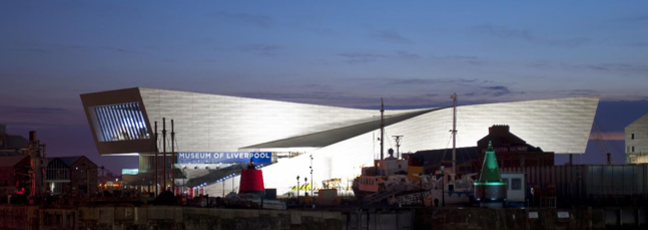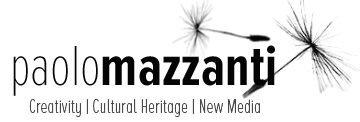Behind the Scenes at the 21st Century Museum

I attended this online course created by leading academic researchers and museum professionals in the field of museum studies. It is a collaboration between the School of Museum Studies at the University of Leicester and National Museums Liverpool.
It’s an introduction to museum studies to learn about the people and ideas that shape museums today.
How can we understand museums today? Who makes the decisions about what to put in them and whose stories they tell? Who are museums for and why are they working to engage new audiences? How do we respond emotionally to museum objects and spaces? And how can museums play a role in the pursuit of social justice, human rights, or health and wellbeing?
More info:
https://www.futurelearn.com/courses/museum
From the course “Behind the scenes at the 21st century museum” // Paolo Mazzanti
What is a #21stCenturyMuseum?
• I think the 21st century museum should be as interested in its visitors as its visitors are in the museum.
• I think a 21st century museum is a place that’s maybe less of a museum and more of a community and social space, and that wall or those barriers start to hopefullybecome less apparent and sort of more overlapping between everything else we do in our life, be it through subjects and topics we discuss, but also kind of physicallywith the boundaries between the physical space and the digital space. And it all kindof beautifully mixes together, hopefully.
• I think a 21st century museum should embrace fully the opportunity to get all of its information out there to make it available to just anyone online to the massive collaboration, communication opportunities, to build a global resource for everyone.
• I think a 21st century museum shouldn’t be afraid to adapt to changing technology, and also to the changing needs of their audiences. There are so many new media emerging that museums could make good use of.
• I think that they need to be more flexible in how they respond to their audiences. It needs to look at stories in a way that maybe newspapers are afraid to, because we have to understand that everyone comes from a history and has their own perspective. I think that museums need to do a good job of recognising that and showing the flaws in logic that has been represented often.
• I think the 21st century museum is a place where the visitor can use their imagination, their curiosity, and their creativity in a space that’s safe, and that enables them to grow and engage with the museum and other people.
• It’s kind of a place where the past and the present are tied together, so you can look at the events of the past, and you can tie it into very contemporary debates. But also you can then use that to ask questions about the future. I think it’s doing it’s a way to really, I don’t know, look at human development over time.
• A 21st century museum should be about actively engaging in discussion, particularly in past and present, and really I think, maybe present day matters as well, such as like human rights and things like that. I don’t think it should just be all about the past.
• I think the 21st century museum should always being engaging. People could find something related to themselves. They would feel like this also happens in my life, and they can always find something new
#BARRIERS
To consider the many types of barriers that inhibit participation of many voices and identities. Those on low incomes will feel the effects of financial barriers; and people with disabilities will be particularly affected by physical and sensory barriers. Some members of minority ethnic groups in Europe may be affected by cultural barriers
• Physical // Is our museum building physically accessible? Is it open at times which suit different audiences?
• Sensory // Can our exhibitions, events, and facilities be used by people with hearing or sight impairments?
• Intellectual // Do our displays exclude people with limited prior knowledge of the collections or artists on show? Can people with learning disabilities access our services?
• Financial // Does our admission fee deter people on low incomes? Do our shop and café sell items that families can afford?
• Emotional or attitudinal // is our museum environment welcoming to new visitors? Do our staff have open attitudes to diversity? Is the style of our publicity inclusive or exclusive?
• Lack of involvement in decision-making // Does our museum consult potential new audiences and value the input of external stakeholders?
• Lack of access to information // Does our publicity effectively reach and communicate with new audiences?
• Cultural // Do our collections, displays and events reflect the interests and life experiences of our target audience?
• Technological // Does our use of new media facilitate rather than hinder access for our audiences? Do we exploit new advances in technology to enable access?
#MOTIVATION
To explore other models for understanding what barriers there are, including lack of motivation. Thinking more deeply about what motivates people to visit responds to the assertion that, even when barriers to access are identified and dismantled, people may still choose not to attend. In this case, the reason for non-attendance is that individuals do not believe museums will meet their specific needs.
#EMOTIONS
The 21st Century Museum seeks to engage and connect with its audience, it is inevitable that people will respond emotionally to the spaces, objects, exhibitions and stories that they contain. How museums should approach and consider emotions in designing exhibitions, displaying objects or telling stories.
#HUMAN RIGHTS
To consider how museums can contribute to issues around social justice and human rights and different ways in which we believe museums can support positive change in society (racism and hate crime, discrimination based on sexuality and gender and how museums can better represent people who had, traditionally, been underrepresented in museums)
#HEALTH AND WELLBEING
21st Century Museum by thinking about how museums can contribute to the health and wellbeing of individuals and communities.

Lascia un commento
Devi essere connesso per inviare un commento.